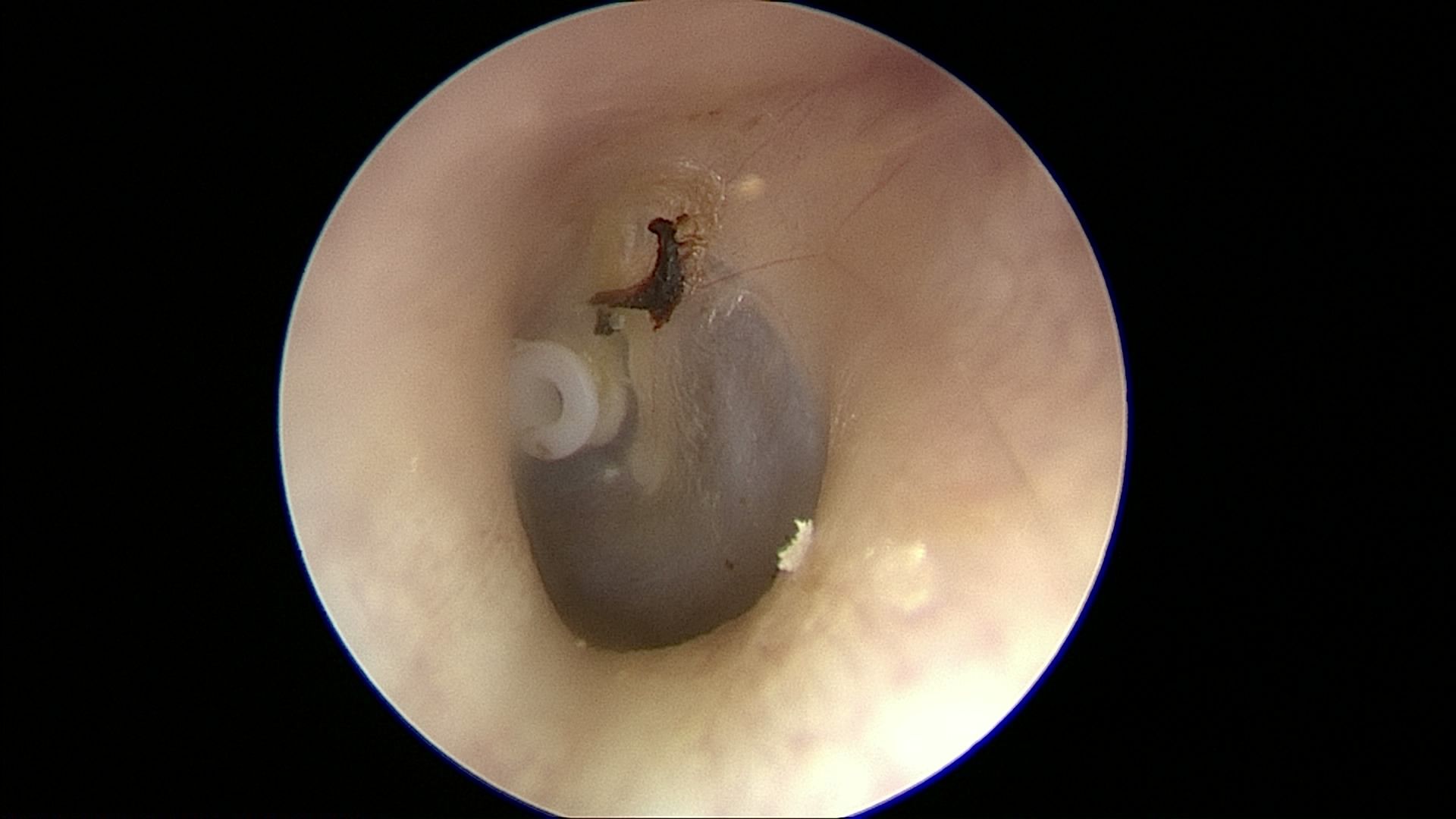Drainage in the eardrum
Drainage in the eardrum
On this page you will find information about placing drains in the eardrum.
Eardrum drainage is a treatment that involves placing a small tube in the eardrum to relieve your child's symptoms of fluid in the middle ear. Drains are placed if your child is bothered by pain, has restless sleep, has delayed language development due to hearing loss, or has recurrent acute middle ear infections with fever and pain.
Fluid in the middle ear
The middle ear is a cavity on the inside of the eardrum and lies between the outer ear and the inner ear. The middle ear contains the three smallest bones in the body that conduct sound from the eardrum to the inner ear. There must be air in the middle ear. If there is no air in the middle ear, but fluid or inflammation, this means that the eardrum does not move freely and hearing is impaired. This also causes pain when the child lies down. These problems can be eliminated by placing drains in the eardrum.
Most children experience fluid in the middle ear when they have a cold. In most cases, this is temporary, but in some children the fluid in the middle ear does not go away on its own and these children may benefit from having a drain placed in the eardrum.
As the condition often resolves on its own, you will typically be offered a period of observation before being offered drainage. In some children, the fluid in the middle ear is caused by the eustachian tubes being blocked due to childhood polyps. In these cases, the child may benefit from having the childhood polyps removed. However, this requires the child to be older than two years and weigh more than 12.5 kg.
Symptoms of fluid in the middle ear
- Crying when the child lies down.
- Problems falling asleep and rapid awakening once the child has fallen asleep.
- Frequent awakenings at night.
- Delayed language development.
- Touches the ear.
- Tumbling and falling, poor balance
About the operation
The actual placement of the drain takes place while the child is under full anesthesia and only lasts a short time. When the child has been discharged from the recovery room, you can go home again and the child can come to the institution the day after the drain is placed.

Frequently Asked Questions
What is eardrum drainage?
Tympanic membrane drains are small tubes inserted into the eardrum to help drain fluid out of the middle ear and improve ventilation.
The drains are often used for children, but adults may also need them, especially if they have recurring middle ear infections (otitis media) or fluid accumulation in the middle ear that affects hearing or causes discomfort.
Purpose of eardrum drainage
Eardrum drainage helps with:
- Preventing fluid accumulation: Persistent fluid in the middle ear can lead to hearing loss and infections.
- Reducing the risk of otitis media: Middle ear infections can be painful, and drains can reduce their frequency.
- To improve hearing: Fluid in the ear can make sounds muffled, and drainage can help restore normal hearing.
How should we behave after the operation?
AFTER DRAINAGE SYSTEM
After drains have been placed, they must be checked every 6-12 months during a short consultation to determine whether the drains are still functioning as they should.
Swimming pool:
Children with drains are welcome to go swimming and do not need to use earplugs. However, we do not recommend that your child dive below one meter. We recommend that you wait a week after the operation before going swimming.
My child has had a drain put in and now his ear is leaking...
After placing a drain in the eardrum, a passage is created that allows fluid to escape and air to enter the middle ear. This is the desired effect of the drain.
However, it often happens that when a child gets a cold, snot forms in the middle ear, which runs out through the drain. This is usually not bothersome for the child, but can prevent the child from going to the institution and can be a nuisance for everyone else as the secretion can be smelly and stick to the hair and clothes.
We therefore recommend that as soon as the ear starts to drain, you start to drip the ear with antibiotic ear drops that you were prescribed on the day of surgery.
If the ear canal is completely filled with secretions, it must be rinsed clean before the ear is drained - but you will be informed about all of this both verbally and in writing in connection with the operation, so that you are never in doubt about how your child with new drains will be treated in the best possible way.
Video showing the placement of drains in the eardrum:


